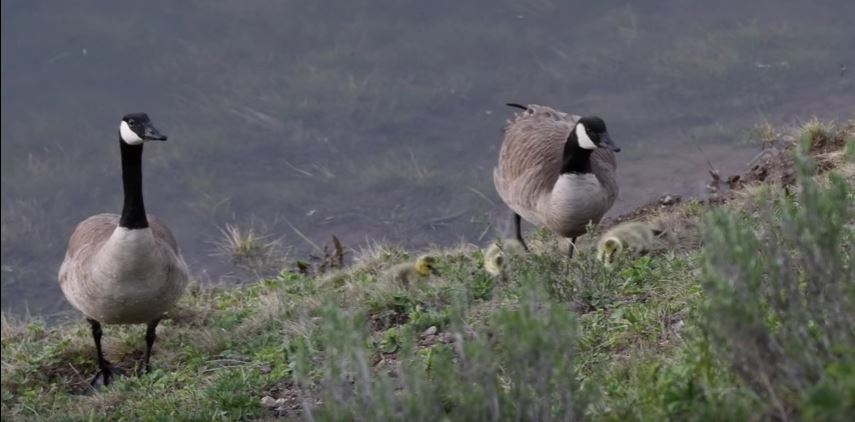About the Canada Goose: Appearance, biology, life cycle, habitat, diet, behavior

A Canada Goose is a large and wild bird with a black neck and head. It has white patches on its face and it has a brown body. It can easily survive by living in areas that have been altered by human activities. Canada geese can establish colonies in cultivated and urban areas where they can get food and are exposed to few predators.
The Canada goose is a migratory bird, and it can move around in autumn and spring. Some birds became non-migratory because of having enough winter food. Males have antagonistic behavior during the breeding and off breeding times or at the nesting grounds. The behavior may involve interspecies killings.
Canada Geese are herbivores, but they may eat fish or insects. Their diet involves eating grains and vegetation. A Canada goose may eat different grasses found around their living environment. It will feed through grasping the blade of grass with its bill and tearing it by jerking its head. It can eat grains like corn, rice and wheat or beans. When it is in the water, it will feed from the silt. It can eat aquatic plants like seaweed. In the urban areas, it may eat from garbage bins.
A Canada goose will find a mate in the second year of its life, and they are known to be monogamous. The couples will stay together throughout their lives. When one dies, the other one may look for a new mate. The female can lay from two up to nine eggs, and the two parents will protect their nest when the eggs are incubating. However, a female can spend more time near the eggs compared to the male. When the goslings hatch, they will start to look for their food, and the parents may lead their children around in one line. To protect their children, the parents may chase away creatures that come around their goslings. The survival rate of wild geese may range from 10 up to 24 years. The longest recorded time that a goose has survived is 31 years. As a Canada goose gets old, it will not be exposed to many predators because of its large size and aggressive behavior.
Go back to the How to Get Rid of Canada Geese page or email us if you have any other questions about About the Canada Goose: Appearance, biology, life cycle, habitat, diet, behavior
About Us
We are the Pest Education Network, a non-profit organization that focuses on wildlife and pest removal education. Our approach utilizes Integrated Pest Management, a strategy advocating prevention and humane methods.


